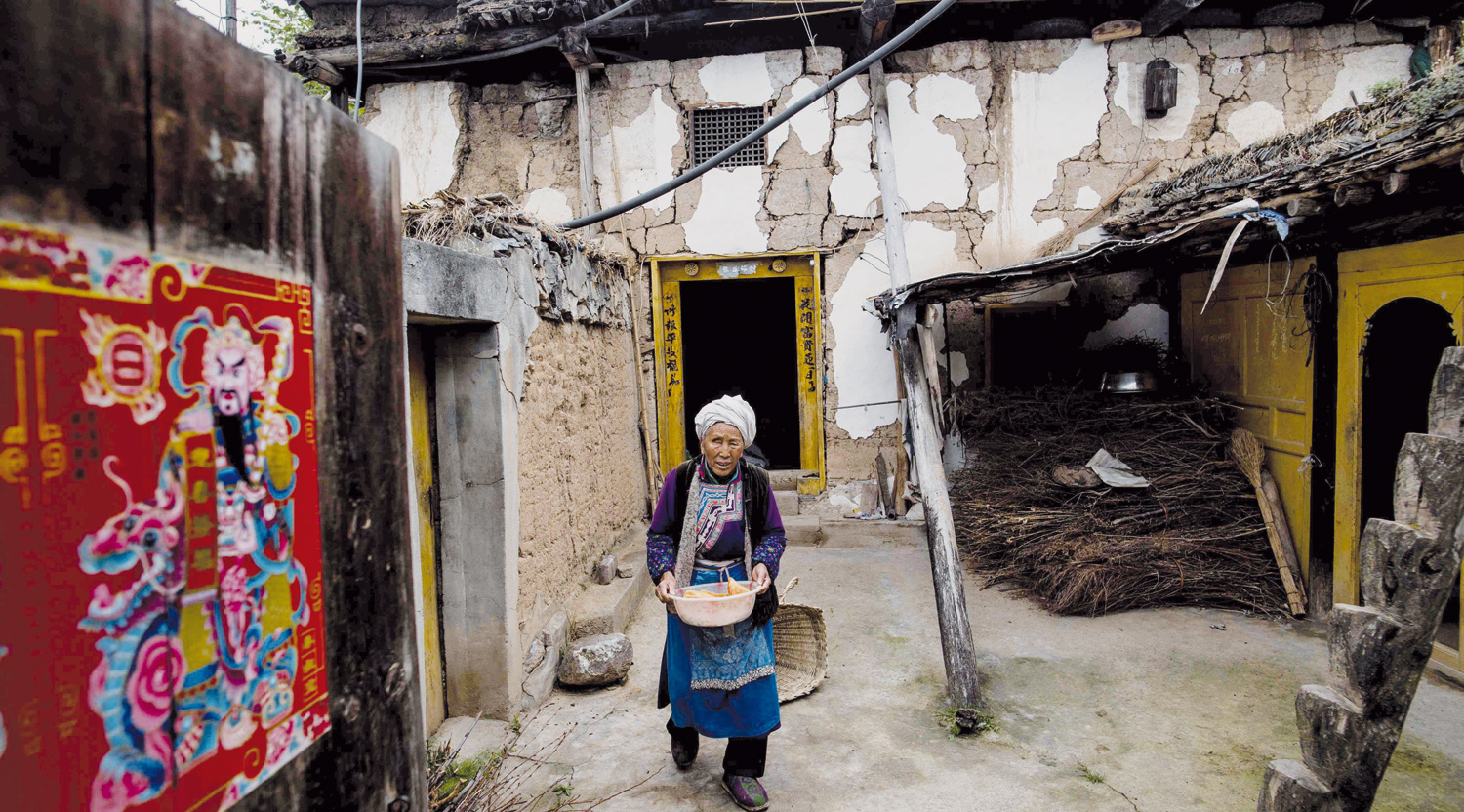

For some residents of southwestern China’s Radish Village, very little has changed in the decade since a devastating earthquake nearly levelled their ancient homes.
The tiny hamlet is one of several in Sichuan province that decided to preserve the destruction as a memorial to the disaster that left 87,000 people dead or missing when it struck on May 12, 2008.
But there is one major difference: among the debris in Radish Village, life goes on.
Vegetable gardens quilt the spaces where homes once stood. Survivors grow greens and other crops among the rubble to supplement their meagre income.
Collapsed homes double as hog pens. Bees buzz through empty window frames and into rooms open to the sky, where elderly survivors tend to their hives.
The honey is one of several products locals hawk to tourists wandering the village’s quiet footpaths.
As an early morning mist breaks, women in the traditional blue robes of the local Qiang minority group set up tables full of trinkets and medicinal herbs gleaned from the mountainside.
Padlocks still protect ancient wooden doors, twisted in their frames by the earthquake’s tremendous power.
While most of the houses were purchased by the government, some elderly residents continue living in them.
The structures, made from wood and mud, survived one 1,000-year earthquake, they reason. Surely they can withstand another.
Their new homes, however, they are not so sure about.
A number of them have already begun falling apart, with some villagers blaming local government corruption for the problems.
Billions of dollars poured into the region to rebuild homes and infrastructure devastated by the quake.
But in Radish Village at least, recovery funds were never put to their intended use, locals said.
Instead, they enriched cadres and their relatives.
“Officials took all the money for fixing our homes and ran off with it,” said one villager.
Their “relatives can get money. The regular people who don’t have officials for relatives can’t.”
Wang Chengguo, a local resident, offers journalists an alternative tour of the village. Instead of leading them through the ruins of the old town, he takes them to see the new town, built right next door.
Like the official itinerary, his also takes visitors past collapsing and half-ruined homes, but unlike the one most visitors see, there are no signboards explaining the chaos.
It ends at a building tucked down a small alley.
A message is painted in black ink on its buckled wall, scrawled next to a deep fissure that splits the building like a fault line: “This is a home the national government built for refugees of the Wenchuan earthquake. It was built according to regulations.”
The date is July 26, 2017. Nine years after the quake.
“No Chinese media dares to report this,” Chen said.
Asked if he was afraid he would be punished for telling his story, he laughed bitterly. “Don’t worry,” he said.
“No one cares.” — AFP
Oman Observer is now on the WhatsApp channel. Click here



